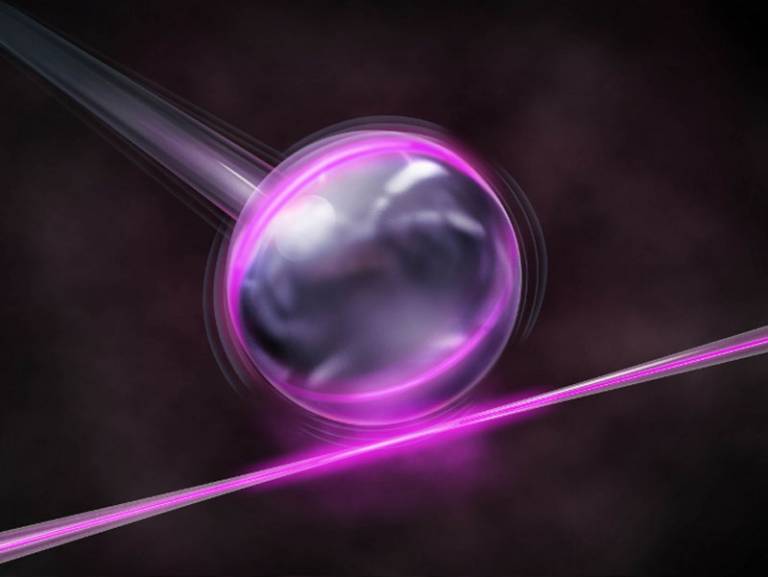Sensor brings optical navigation closer to reality
18 February 2019
An optical sensor which detects displacements smaller than the size of a single atom has successfully completed the first-stage of outdoor field-tests performed by UCL and the Defence Science and Technology Laboratory (Dstl).

Scientists from the Optomechanics group in UCL Physics & Astronomy developed the incredibly precise motion sensor which uses laser light trapped within a microsphere to detect extremely small vibrations and motion.
The method surpasses the sensitivity of the electrical sensors in your phone, and will improve position accuracy for users of navigation apps and bio-monitoring devices like Fitbits.
The motion detector measures acceleration and vibration because of an “optomechanical” coupling between light and motion – the same mechanism behind the Nobel Prize winning Laser Interferometer Gravitational Wave Observatory (LIGO).
In LIGO, a laser beam bounces between two mirrors spaced apart, and is amplified due to a resonance condition. The mirror separation is linked to the optical resonance just like the length of a violin string determines the pitch; a passing gravitational wave can alter the light amplification because it moves one of the mirrors into and out of resonance.
The research team, comprising Professor Peter Barker and Dr Ying Lia Li, applied the principle of LIGO to a much smaller system by using glass microspheres to confine and amplify laser light like a ring of mirrors, creating a resonance known as an optical whispering gallery mode that is sensitive to the sphere motion, even if it moves the same distance as the width of an atom.
The decision to make a rapid prototype in one year was inspired by Dr Li’s experience as a participant in the 2016 Nature/Entrepreneur First Innovation Forum, which was a selective and intensive entrepreneurship course focusing on ways to commercialise quantum technology.
She developed a business strategy focsuing on developing classical prototypes first, using the tools available at UCL, rather than outsourcing fabrication or attempting quantum prototyping.
Dr Li explained: “There are two so-called valleys of death when translating research into a commercial product; the first one tests whether the sensor can even operate outside of the laboratory, and the second requires optimising the design to the physical and economic needs of the customer. You don’t want to spend millions before you’re confident the sensor and its entire package works.”
The field test was organised by Dstl, an Executive Agency of the MOD which delivers high-impact science and technology for the UK's defence, security and prosperity. By testing the sensor on a ruggedised all-terrain vehicle, Dstl assisted in the development of this fundamental technology from a lab-based experiment into a sensor capable of surviving a harsh environment.
The next iteration of this sensor will coin-sized, with an aim to match the sensitivity of laboratory-based cold-atom devices which are currently the most sensitive, capable of detecting objects underground or behind walls. If successful, the UCL device could then be integrated with an optical atomic clock and optical rotation sensor to become the world’s first and most sensitive all-optical navigation device, providing a source of temporary guidance for autonomous cars or drones during GPS denial.
The team will now explore the commercial potential of a quantum version of such a sensor “The expertise we have developed will used to further enhance our ability to explore new regimes in quantum optomechanics,” concluded Professor Barker.
Links
- UCL Physics & Astronomy
- Dr Ying Lia Li's academic profile
- Professor Peter Barker's Academic Profile
- Defence Science and Technology Laboratory
- Field evaluation of a portable whispering gallery mode accelerometer, Sensors, 18(12), Y. L. Li & P. F. Barker, (2018)
- Characterization and Testing of a Micro-g Whispering Gallery Mode Optomechanical Accelerometer, Journal of Lightwave Technology, 36(18), Y. L. Li & P. F. Barker, (2018)
 Close
Close

